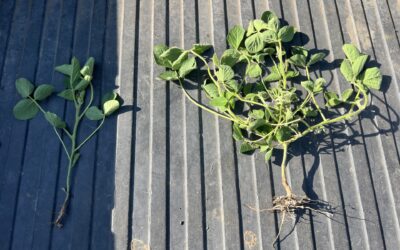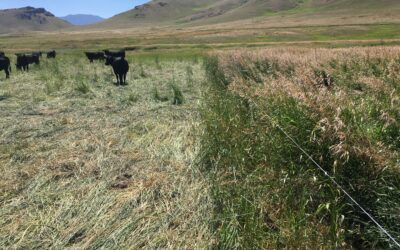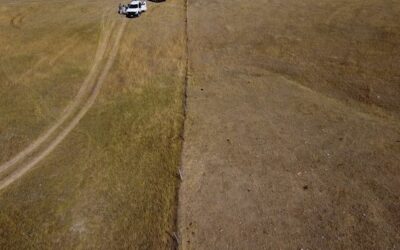Water Capacity
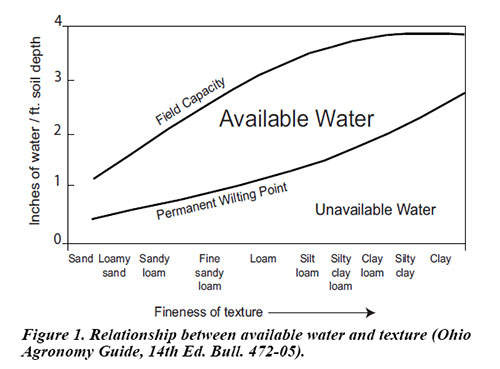 Available water capacity is the maximum amount of plant available water a soil can provide. It is an indicator of a soil’s ability to retain water and make it sufficiently available for plant use.
Available water capacity is the maximum amount of plant available water a soil can provide. It is an indicator of a soil’s ability to retain water and make it sufficiently available for plant use.
Available water capacity is the water held in soil between its field capacity and permanent wilting point. Field capacity is the water remaining in a soil after it has been thoroughly saturated and allowed to drain freely, usually for one to two days. Permanent wilting point is the moisture content of a soil at which plants wilt and fail to recover when supplied with sufficient moisture. Water capacity is usually expressed as a volume fraction or percentage, or as a depth (in or cm).
Relationship to Soil Function
Soil is a major storage reservoir for water. In areas where rain falls daily and supplies the soil with as much or more water than is removed by plants, available water capacity may be of little importance. However, in areas where plants remove more water than is supplied by precipitation, the amount of water held by the soil may be critical. Water held in the soil may be necessary to sustain plants between rainfall or irrigation events. By holding water for future use, soil buffers the plant – root environment against periods of water deficit.
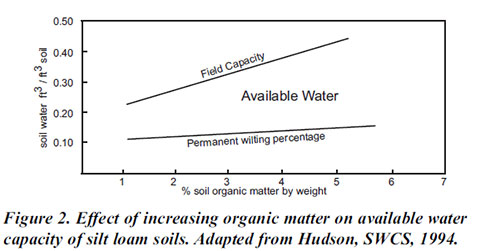
Available water capacity is used to develop water budgets, predict susceptibility to drought, design and operate irrigation systems, design drainage systems, protect water resources, and predict yields.
Problems with Poor Function
Lack of available water reduces root and plant growth, and it can lead to plant death if sufficient moisture is not provided before a plant permanently wilts. A soil’s ability to function for water storage also influences runoff and nutrient leaching.
Agricultural land management practices that lead to poor available water capacity include those that prevent accumulation of soil organic matter and/or result in soil compaction and reduced pore volume and size:
- Conventional tillage operations,
- Low residue crop rotations, and burning, burying, harvesting, or otherwise removing plant residues,
- Heavy equipment traffic on wet soils, and
- Grazing systems that allow development of livestock loafing areas and livestock trails.
As natural areas are permanently converted to homes, roads, and parking areas, the overall amount of water that can be stored in the soil is reduced. This leads to higher total runoff, increased pressure on storm water drainage systems, a higher likelihood of flooding, and generally poorer water quality in streams and lakes.
Improving Available Water Capacity
Farmers can grow high residue crops, perennial sod and cover crops, reduce soil disturbing activities, and manage residue to protect and increase soil organic matter to make improvements in a soil’s available water capacity. When feasible, tillage, harvest, and other farming operations requiring heavy equipment can be avoided when the soil is wet to minimize compaction; and compacted layers can be ripped to break them and expand the depth of the soil available for root growth.
For soil high in soluble salts, management activities that maintain salts below the root zone can be used. These include irrigation to leach salts below the root zone and practices that promote infiltration, reduce evaporation, minimize disturbance, manage residue, and prevent mixing of salt-laden lower soil layers with surface layers.
Conservation practices resulting in available water capacity favorable to soil function include:
- Conservation Crop Rotation
- Cover Crop
- Prescribed Grazing
- Residue and Tillage Management
- Salinity and Sodic Soil Management
Developers can incorporate the use of permeable parking areas, green roofs, and other practices that minimize the impact of development on soil water storage.
This Page Was Created Utilizing Text And Images From These Sources:
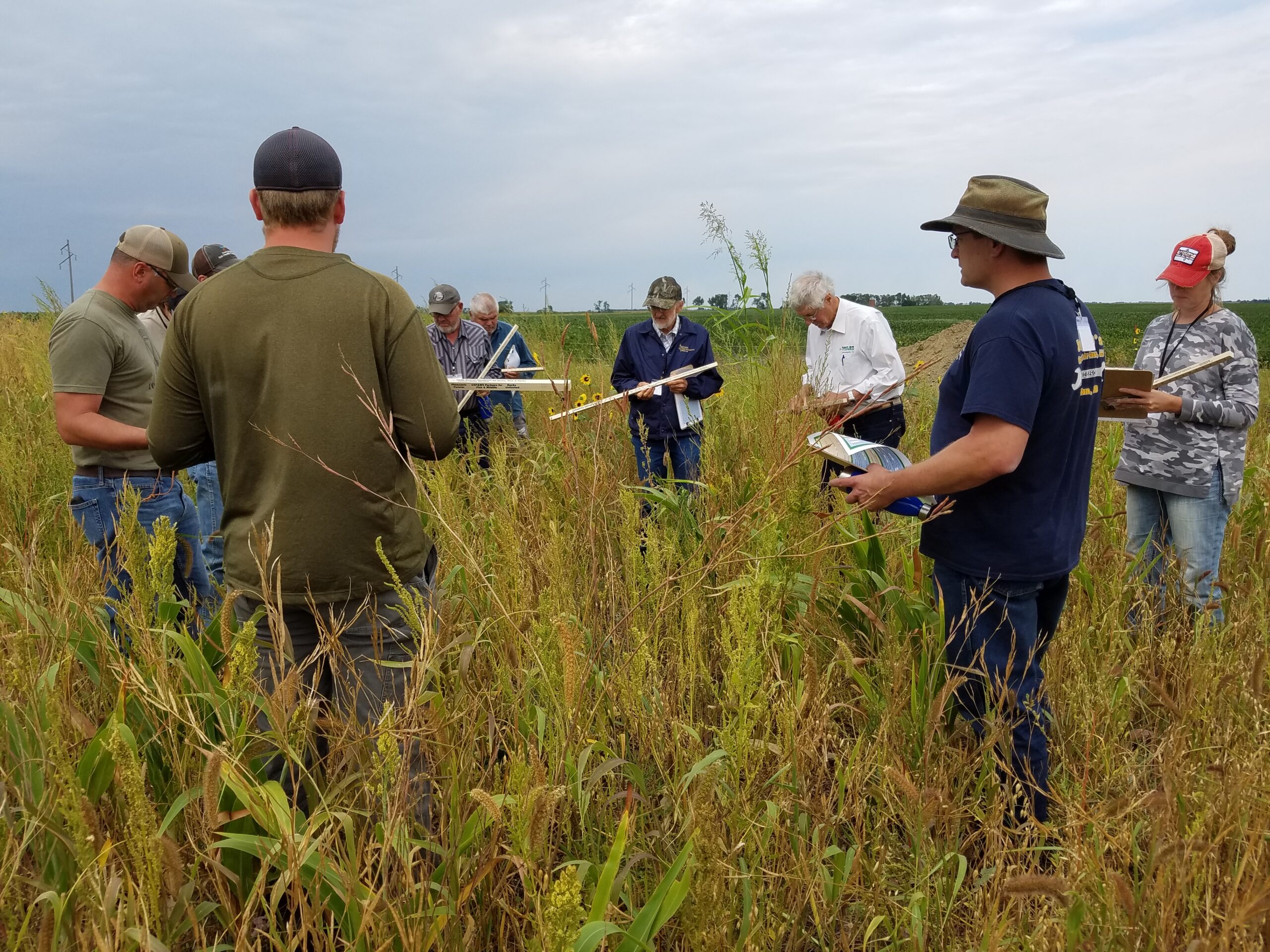
West River Soil Health School Registration Open!
In 2024, the South Dakota Soil Health Coalition will host an additional Soil Health School in west of the Missouri River! The 2024 West River Soil Health School with be held June 26-27 near Caputa, SD! This school will focus on issues specific to the land, climate, and ag production systems of wester South Dakota. Class size is limited, so early registration is strongly encouraged!
News & Events
Farmer reaps higher yields by interseeding soybeans
By Stan Wise Alex Frasier has spent a lot of time studying what it takes to grow a successful crop. After studying ag production and precision technology at Lake Area Technical College, he has worked in ag retail and currently works as an agronomist in Aberdeen, SD....
Farm and ranch innovators to share new ideas at Soil Health Conference
By Stan Wise PIERRE, SD — Before Cooper Hibbard came home to manage his family’s ranch, he studied ag business, rangeland resources and Spanish at California Polytechnic State University and then worked on ranches all over the world. That education and experience...
Wintertime is decision time
By Stan Wise PIERRE, SD – It’s often said that the best time to start improving your land was 20 years ago, but the second-best time is right now. That statement might be harder for ranchers to swallow with winter on their doorstep, nothing growing in their pastures,...
